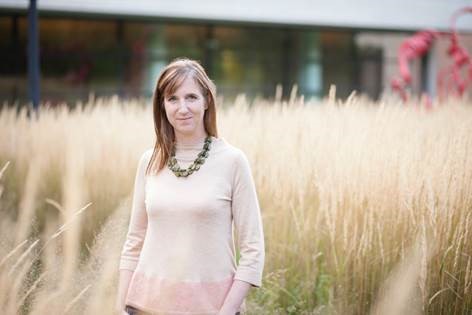Q&A on public engagement with UMN IonE Director Jessica Hellmann
ESA Fellow and AAAS Leshner Fellow Jessica Hellmann is director of the Institute on the Environment and a professor of Ecology, Evolution, and Behavior at the University of Minnesota.
Some ESA members regularly practice public engagement, but it often falls by the wayside due to lackluster support from their workplace and time pressures. Four ESA members, who are in the fist cohort of the AAAS Public Engagement Fellows of the Leshner Leadership Institute, are issuing a clarion call to universities and scientific organizations to build capacity and support researchers to engage directly with the public. In October’s Frontiers in Ecology and the Environment, the guest editorial is “Engagement 2.0: increasing our collective impact.”
In the spirit of supporting their efforts and the call, we posed these three short questions to the four authors to explore what motivates scientists to engage with the public. This is the second blogpost in the public engagement series.
Why do you chose to participate in public engagement?
I want to discover a sustainable way for humans to live on Earth, and I want to work with others to build that future. I study how to preserve natural resources in the face of climate change. Science tells us what effects climate change is likely to bring, what management strategies might be effective at reducing those effects, and what management outcomes are viable or possible. But science can’t tell us what is a good or desirable outcome from a social or political point of view (though the scientific literature suggests that conserving diversity provides resiliency and healthy ecosystem function). We must work with government, corporations and voters to find shared goals. As academics, we can play an important role in bringing people together.
What do you receive from your efforts?
I get to imagine the future with a wide range of partners and stakeholders, from ethicists, to corporate leaders, to politicians, and even theologians interacting. I get the pleasure of getting out of the ivory tower and discussing important ideas with the public. It gives me personal satisfaction that my work–and my discipline–matters to people. My understanding of what is an interesting research question is also affected by interactions with people outside of academia and science, and I think this makes me a more effective ecologist and public communicator of science.
What is the biggest barrier to scientists doing more public engagement?
I know many of my colleagues will agree with this answer: time. To me, it’s not a question of whether or not to be engaged with thought-leaders, implementers, and the broader public, but to figure out how much time I should dedicate and which activities are effective and worth my effort. I do know that the amount of time one should spend and the tools one should use evolves and changes over the course of a career–they have over my own career. They also evolve and change as society changes; for example, the rise of social media has provided me a new way to interact with non-scientists in a way that feels fun and, at least sometimes, productive. I try to regularly evaluate my time and tactics in engagement, not in search of the “right” answer but in an attempt to be strategic and thoughtful about where I put my effort and heart.

Read the full editorial in October’s ESA Frontiers, “Engagement 2.0: increasing our collective impact.”
Follow the conversation on Twitter (@esa_org, @ESAFrontiers,@DukesJeff, @kwren88,@JessicaHellmann): #EngageESA, #LeshnerFellows, #scicomm
Look for more public engagement posts over the next month or so from these ESA members:
- Melissa A Kenney, University of Maryland, College Park, MD
- Jeffrey S Dukes, Purdue University, West Lafayette, IN
Read the first post in this series featuring Karen Lips, University of Maryland, College Park, MD
Would you like to share your public engagement story with ESA? We’d love to hear from you! Email alison@nullesa.org for more information.
